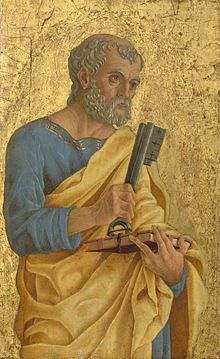
After being told by Mary Magdalene and the other women that they had found Jesus’ tomb empty, Peter responded in a way that most of us probably would have: he immediately ran off to the tomb to confirm their story. Here is how his reaction is described in Luke 24:12: Peter, however, went off to the tomb, running. He bent down and looked in and saw the linen cloths but nothing else; he then went back home,
amazed at what had happened.
This description of Peter as ‘amazed’ at the empty tomb recalls something Pope Saint John Paul II said near the end of his papacy. In an encyclical, John Paul II called for a rekindling of ‘Eucharistic amazement.’ This Easter season is an opportunity for us to also rekindle our amazement at the resurrection, following the example of St. Peter.
How can we rekindle in our hearts ‘amazement’ at the resurrection? It’s worth pointing out that amazement at the Eucharist and amazement at the resurrection are quite closely related. It goes without saying that without the resurrection we could not receive the gift of the Eucharist. Indeed, the connection is even closer: the original example of Eucharistic amazement cited by John Paul II is the breaking of the bread between Jesus and the disciples on the road to Emmaus. This was one of the first appearances of Christ after his resurrection. This offers us a specific way of thinking about the Eucharist—as a way of experiencing the Resurrected Christ.
